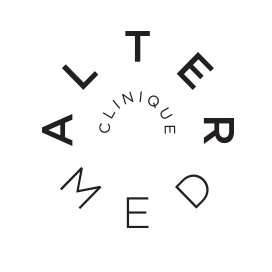Florence Charbonneau-Dufresne
According to Hogg-Johnson et al., (2009) the 12-month prevalence of idiopathic neck pain in adults was between 12.1%-71.5%, with the average estimates being 30%-50%. Furthermore, 50-80% of people with neck pain have no specific underlying pathology or pathoanatomical cause. This is known as ‘’Mechanical Neck Pain’’. These people usually present themselves to the clinic with a previous history of neck pain (multiple neck pain episodes on a long period of time). They report an insidious onset of pain that potentially started after a prolonged activity or a sustained posture.
Classical Clinical Presentation
Patients usually experience moderate and/or intermittent pain that can be either aggravated or alleviated through specific movements and postures. For example, the pain can flare up when the patient turns his head to the right or left and after spending a whole day working at the computer. The symptoms are usually better in the morning and worsen during the day with activity. The pain is frequently located in the neck area and might spread to the shoulder blade and upper back. Occasionally, it can be present in the arm, more like an ache than a shooting pain. Shooting pain in the arm is more often related to cervical radiculopathy (nerve compression at the neck) and is not part of the mechanical neck pain presentation. Also, patients with mechanical neck pain usually don’t have neurological symptoms like numbness, tingling or neurological weakness.
xx

Risk Factors
Women are more at risk than men to develop mechanical neck pain. Older age also puts you at a higher risk and genetics can play a role. Other physical risk factors include prolonged posture, history of neck pain, high job demand, and sporting or occupational activity. There is also a higher prevalence associated with some psychological factors including anxiety, depression and low social or work support.
Diagnostic
Clinical diagnostic of mechanical neck pain is based on patient’s symptoms and physical evaluation by a physical therapist. There is no need for imaging because mechanical neck pain is not correlated to structural changes of the spine; and individual can present with this condition regardless of his x-ray results. The physiotherapist will assess the person’s neck mobility, strength and control. This will help to identify the problems and plan treatment accordingly.
Treatment Options
Most of the time, patients with mechanical neck pain have decreased neck mobility and deep neck muscles (neck’s core) weakness. The physiotherapy treatments will vary depending of the patient’s individual findings during the physiotherapy assessment. To increase neck and upper back mobility, treatment can include manual therapy (mobilizations and manipulations) and muscle treatment (massage, dry needling, myofascial release, Instrument-Assisted Fascial Mobilization, etc.). The physiotherapist will also provide the patient a home exercises program including neck mobility exercises and stretches.
xx
Retraining proper neck and shoulder girdle strength is important for long term results to ensure optimal neck dynamic stability: to stabilize the cervical column during upper limb movements. Also, several neck muscles also attach to the collar bone and shoulder blade. It is therefore important to strengthen the shoulder girdle muscles in order to optimize neck muscle function. Be aware that the strengthening process can take time and it’s important that patients do their exercises regularly.
xx
Physiotherapists will also provide patient with personalized activity-related postural hygiene education. This might include taking breaks every 30 minutes while sitting in front of the computer or during any prolonged posture activity.
By Florence Charbonneau-Dufresne, M.Sc., pht Registered Physiotherapist
References
1. Heintz, M. M., & Hegedus, E. J. (2008). Multimodal Management of Mechanical Neck Pain Using a Treatment Based Classification System. The Journal of Manual & Manipulative Therapy, 16(4), 217–224.
xx
2. Sionnadh Mairi McLean, Stephen May, Jennifer Klaber-Moffett, Donald Macfie Sharp, Eric Gardiner. (2010). Risk factors for the onset of non-specific neck pain: a systematic review. Journal of Epidemiology and Community Health. 64:565-572.
xx
3. Hogg-Johnson, S., van der Velde, G., Carroll, L. J., Holm, L. W., Cassidy, J. D., Guzman, J., . . . Peloso, P. (2008). The burden and determinants of neck pain in the general population: Results of the bone and joint decade 2000-2010 task force on neck pain and its associated disorders. Spine, 33(4 Suppl), S51. 10.1097/BRS.0b013e31816454c8 Retrieved from https://www.ncbi.nlm.nih.gov/pubmed/18204398
xx
4. Yin, W., & Bogduk, N. (2008). The nature of neck pain in a private pain clinic in the united states. Pain Medicine, 9(2), 196-203. 10.1111/j.1526-4637.2007.00369.x Retrieved from https://onlinelibrary.wiley.com/doi/abs/10.1111/j.1526-4637.2007.00369.x
xx
5. Steven P. Cohen. (2015) Epidemiology, Diagnosis, and Treatment of Neck Pain. Mayo Foundation for Medical Education and Research. 90(2):284-299
xx
6. Gorrell, L. M, Beath, K., Roger, M. (2016). Manual and instrument applied cervical manipulation for mechanical neck pain: A randomized controlled trial. Journal of Manipulative and Physiological Therapeutics, 39(5), 319-329. 10.1016/j.jmpt.2016.03.003 Retrieved from https://www.clinicalkey.es/playcontent/1-s2.0-S0161475416300057 (Links to an external site.)
xx
7. De Pauw, R., Coppieters, I., Palmans, T., Danneels, L., Meeus, M., & Cagnie, B. (2018). Motor impairment in patients with chronic neck pain: Does the traumatic event play a significant role? A case-control study. The Spine Journal, 10.1016/j.spinee.2018.01.009
xx
8. O’Leary S, Cagnie B, Reeve A, Jull G, Elliott JM. (2011). Is there altered activity of the extensor muscles in chronic mechanical neck pain? A functional magnetic resonance imaging study. Arch Phys Med Rehabil. 92:929-34.
xx
9. Ingram, Lewis A. et al. (2015) Comparison of Cervical Spine Stiffness in Individuals With Chronic Nonspecific Neck Pain and Asymptomatic Individuals. Journal of Orthopaedic & Sports Physical Therapy. 45(3):162-169.
xx
10. Mejuto-Vazquez, Maria J. et al. (2014) Short-Term Changes in Neck Pain, Widespread Pressure Pain Sensitivity, and Cervical Range of Motion After the Application of Trigger Point Dry Needling in Patients With Acute Mechanical Neck Pain: A Randomized Clinical Trial. Journal of Orthopaedic & Sports Physical Therapy. 44(4):252-261.
xx
11. Cross, Kevin et al. (2011) Thoracic Spine Thrust Manipulation Improves Pain, Range of Motion, and Self-Reported Function in Patients With Mechanical Neck Pain: A Systematic Review. Journal of orthopaedic & sports physical therapy. 41(9): 633-642.
xx
12. Snodgrass, S. J., Rivett, D. A., Sterling, M., & Vicenzino, B. (2014). Dose optimization for spinal treatment effectiveness: A randomized controlled trial investigating the effects of high and low mobilization forces in patients with neck pain. The Journal of Orthopaedic and Sports Physical Therapy, 44(3), 141-152. 10.2519/jospt.2014.4778 Retrieved from https://www.ncbi.nlm.nih.gov/pubmed/24450365
xx
13. Ashwini TM, Karvannan H, Prem V. Effects of movement impairment based treatment in the management of mechanical neck pain. Journal of Bodywork & Movement Therapies. 2018;22(2):534-539.
xx
14. Saavedra-Hernández, M., Arroyo-Morales, M., Cantarero-Villanueva, I., Fernández-Lao, C., Castro-Sánchez, A. M., Puentedura, E. J., & Fernández-de-las-Peñas, C. (2013). Short-term effects of spinal thrust joint manipulation in patients with chronic neck pain: A randomized clinical trial. Clinical Rehabilitation, 27(6), 504-512.
xx
15. Dunleavy, K., Kava, K., Goldberg, A., Malek, M.H., Talley, S.A., Tutag-Lehr, V., Hildreth, J. (2015). Comparative effectiveness of pilates and yoga group exercise interventions for chronic mechanical neck pain: Quasi-randomised parallel controlled study. Physiotherapy, 102(3), 236- 242.
xx
16. Lucia Bertozzi, Ivan Gardenghi, Francesca Turoni, Jorge Hugo Villafan˜e, Francesco Capra, Andrew A. Guccione, Paolo Pillastrini. (2013) Effect of Therapeutic Exercise on Pain and Disability in the Management of Chronic Nonspecific Neck Pain: Systematic Review and Meta- Analysis of Randomized Trials Physical Therapy. 93(8):1026-1036.
xx
17. Rodríguez-Huguet, M., Gil-Salú, J., Rodríguez-Huguet, P., Cabrera-Afonso, J., & Lomas-Vega, R. (2018). Effects of myofascial release on pressure pain thresholds in patients with neck pain: A single-blind randomized controlled trial. American Journal of Physical Medicine & Rehabilitation, 97(1), 16-22.
xx
18. Cerezo-Téllez, E., Torres-Lacomba, M., Fuentes-Gallardo, I., Perez-Muñoz, M., Mayoral-Del- Moral, O., Lluch-Girbés, E., . . . Falla, D. (2016). Effectiveness of dry needling for chronic nonspecific neck pain: A randomized, single-blinded, clinical trial. Pain, 157(9), 1905-1917.


